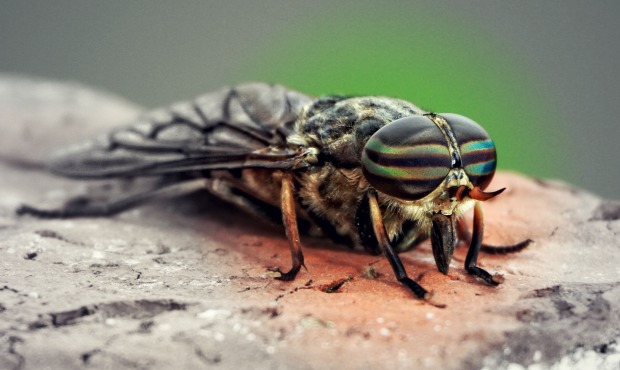
Spring, while objectively beautiful, isn’t limited to blooming flowers and green grass. It is also when the great outdoors’ most annoying—and sometimes dangerous—pests can wreak havoc on your adventures.
Learn how to avoid these five nasty, irritating and persistent springtime pests while enjoying the trails.
Ticks
Ticks are a serious concern for outdoor enthusiasts as they often carry diseases—namely Lyme disease—which can be debilitating for humans and other animals. Symptoms of Lyme disease vary widely but may include a migrating, chronic rash, joint pain, lethargy and even partial paralysis.
Ticks are common across the U.S., but are most prevalent in the Northeast, Northern Midwest and areas west of the Rockies. These tiny little bloodsuckers jump on exposed areas of skin (or fur) and latch on without you even noticing. The longer a tick is attached to your skin, the higher your risk of infection, so prompt removal is of utmost importance.
How To Avoid Them
The best way to avoid a tick bite is to wear long sleeves and pants whenever hiking or running through a wooded area. DEET is an effective tick repellent, but if heavy chemicals make you nervous, BiteBlocker is a safer alternative.
Organic repellents often contain orange oil or other essential oils and can be effective for short amounts of time. Make sure your four-legged trail companion receives regular tick prevention treatment, as well.
You can also greatly reduce your chances of complications from a tick bite by taking a shower within two hours of being outside and performing a whole body check (on both you and your pet) within 36 hours of returning from an area where ticks may be present.
What To Do If You Get Bit
First and foremost: don’t panic! A tick bite doesn’t automatically mean you’re infected, as most ticks don’t carry any disease.
If bit, you’ll want to remove the tick as quickly as possible. However, DO NOT handle a tick with bare hands. Either cover your hands with tissue paper or wear gloves to remove the tick with a fine-tipped tweezer. Grab the tick close to its mouth (the part in your skin) and not around its body, which could cause it to push infected fluid into your body.
Gently pull straight out (don’t twist) until its mouth lets go of your skin. Place the tick in a jar or re-sealable bag so you will have it on hand should you start to show symptoms and need to go to the doctor.
Flies

At a minimum, flies are a simple nuisance to outdoorsmen, but some flies—such as horse flies—can bite, leaving painful welts behind.
Once the weather begins to warm, flies of all varieties begin to swarm and find places to lay their eggs. Horse flies are considerably larger than the common housefly, and the females are quite aggressive blood feeders, usually aiming for repeated spots on the legs and arms of their victims.
How to Avoid Them
Flies, in general, are inactive at night and before sunrise; so early morning hikers are unlikely to encounter them. Much like mosquitos and other blood-sucking insects, horse flies are attracted to the carbon dioxide that humans and animals expel while breathing.
The best way to avoid flies and horse flies is to wear long-sleeved clothing, hats and long pants while outdoors. Essential oils can also provide protection by deterring them from feasting or swarming near you.
A blend of lavender, citronella, peppermint and eucalyptus is particularly effective against a wide range of insects, including flies, horse flies and mosquitos.
What to Do If You Get Bit
Horse fly bites are quite painful but very rarely turn serious. Cool the area of the bite with a wet, cold washcloth, then disinfect it with simple soap and water. You can also take an anti-allergy tablet to control the itchiness of the bite.
If the area remains red, swollen and itchy after a few days, go to your local pharmacy for an over-the-counter insect bite treatment.


